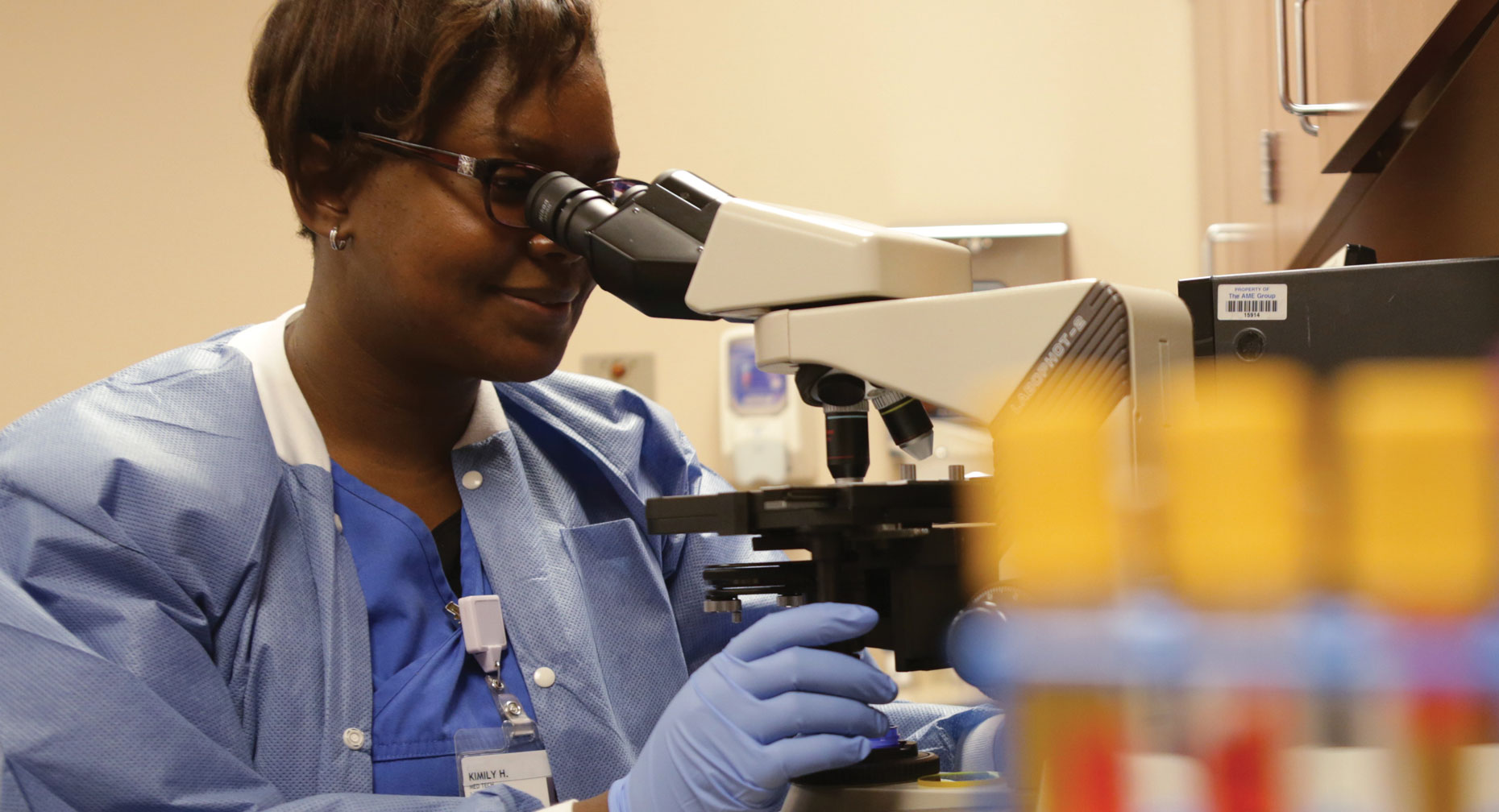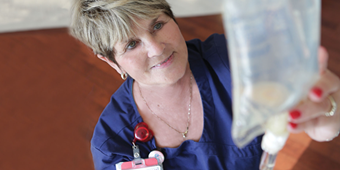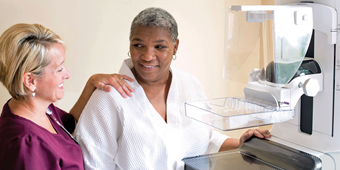Knowledge is Power: Know Your Breast Cancer Type

Answer a few questions and we'll provide you with a list of primary care providers that best fit your needs.
When you or someone you know is diagnosed with breast cancer, knowledge is power in choosing among treatment options. A key thing to understand is the type of breast cancer you have.
The type is determined by the way the cancer cells look under the microscope.
“Most breast cancers are carcinomas, a type of cancer that starts in the cells within the breast,” says Thomas Heck, MD, Surgical Director at the breast center at Miami Valley Hospital North. “Knowing precisely what type the cancer is — and where it is — enables us to attack just those cells.”
Three common types of carcinomas are:
DCIS: ductal carcinoma in situ
DCIS is considered non-invasive or pre-invasive breast cancer. Cells that line the ducts have changed to look like cancer cells. The difference between DCIS and invasive cancer is that the cells have not spread (invaded) through the walls of the ducts into the surrounding breast tissue.
- How common? About 1 in 5 new breast cancer cases will be DCIS. Nearly all women diagnosed at this early stage of breast cancer can be cured.
“Knowing precisely what type the cancer is — and where it is — enables us to attack just those cells.”
IDC: invasive ductal carcinoma, also called infiltrating ductal carcinoma
“This is the most common type of breast cancer,” says Dr. Heck. IDC starts in a milk duct of the breast, breaks through the wall of the duct, and grows into the fatty tissue of the breast. At this point, it may be able to spread (metastasize) to other parts of the body
- How common? About 8 of 10 invasive breast cancers are IDCs.
ILC: invasive lobular carcinoma, also called infiltrating ductal carcinoma
An ILC starts in the milk-producing glands (lobules). Like IDC, it can spread (metastasize) to other parts of the body.
- How common? About 1 in 10 invasive breast cancers is an ILC.
Less common types of breast cancer include:
- Inflammatory breast cancer (IBC). Making up only 1-3 percent of all breast cancers, IBC is an aggressive and hard-to-detect breast cancer that makes the skin on the breast look red and feel warm.
- Paget disease of the nipple. This rare cancer starts in the breast ducts and spreads to the skin of the nipple and then to the areola (the dark circle around the nipple).
- Phyllodes tumor. These are usually benign, but in very rare incidents cancer can develop in the stroma (connective tissue) of the breast.
- Angiosarcoma. This extremely rare breast cancer starts in cells that line blood vessels or lymph vessels.
Answer a few questions and we'll provide you with a list of primary care providers that best fit your needs.
Source: Thomas Heck, MD, Gem City Surgical Associates; American Cancer Society





